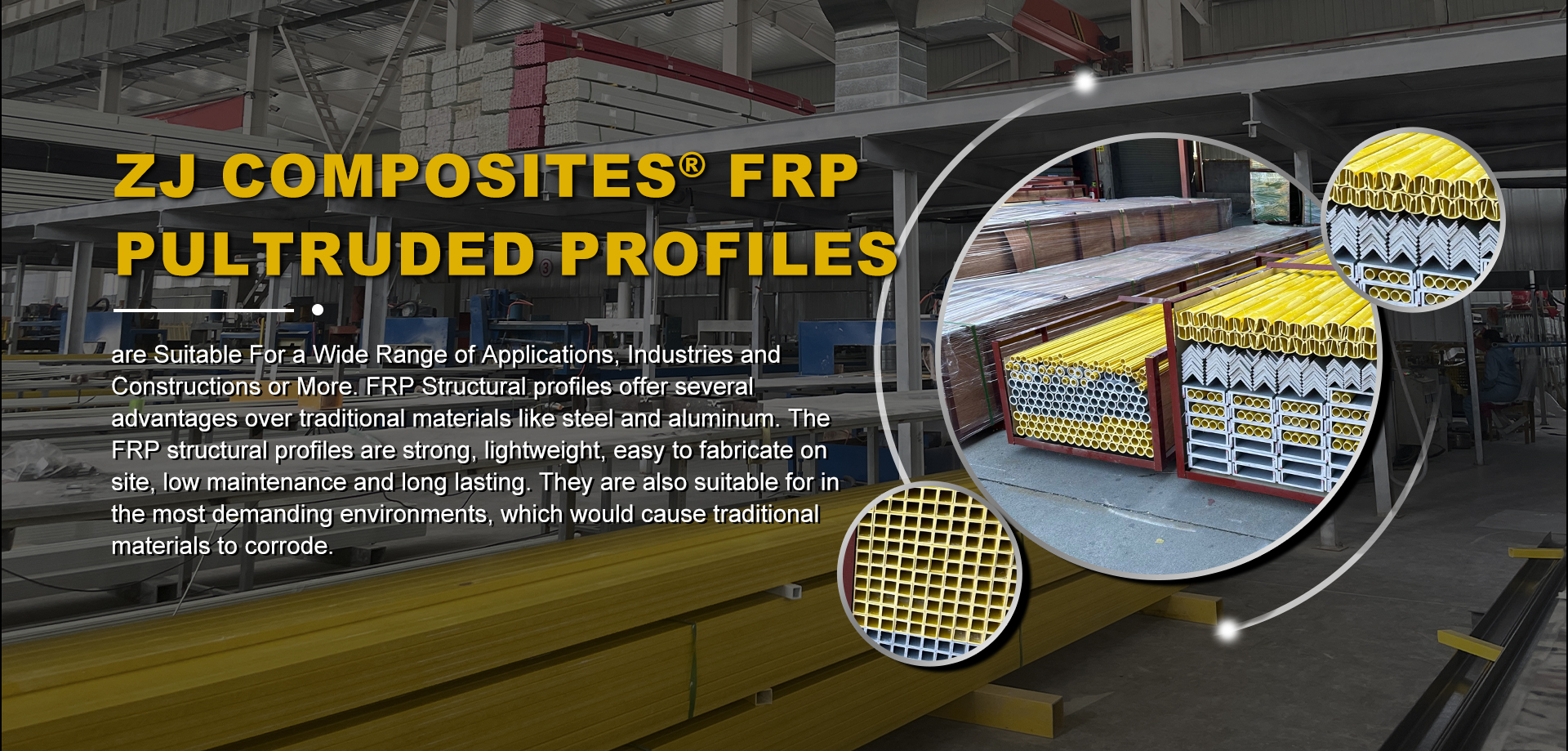loading...
- No. 9, Xingyuan South Street, Dongwaihuan Road, Zaoqiang County, Hengshui, Hebei, China
- admin@zjcomposites.com
- +86 15097380338
- Welcome to visit our website!
frp guardrail
Understanding FRP Guardrails Safety, Design, and Applications
In the ever-evolving world of construction and infrastructure, safety is of paramount importance. Among the various safety features that enhance the protection of workers and the public, FRP (Fiber Reinforced Polymer) guardrails have emerged as a significant innovation. These guardrails are not only lightweight and durable but also offer exceptional resistance to environmental factors, making them ideal for various applications. This article delves into the essential aspects of FRP guardrails, including their benefits, design considerations, and typical uses.
What Are FRP Guardrails?
FRP guardrails are safety barriers made from a composite material that combines polymer resin with reinforcing fibers, usually glass or carbon. This combination endows them with remarkable strength and rigidity while maintaining a low weight. As a result, FRP guardrails are becoming increasingly popular in environments where traditional materials, such as steel or wood, may falter due to corrosion, rot, or other deterioration.
Advantages of FRP Guardrails
1. Corrosion Resistance One of the standout features of FRP materials is their resistance to corrosion. Traditional guardrails made from metal can succumb to rust and degradation due to exposure to moisture and harsh chemicals, particularly in environments like coastal areas or industrial sites. FRP guardrails, in contrast, can withstand such conditions without compromising their structural integrity.
2. Lightweight and Easy to Install The lightweight nature of FRP makes it easier to transport and install. This not only reduces labor costs but also minimizes the time required to set up safety barriers on construction sites or other locations.
3. Durability FRP guardrails are known for their durability and long service life. They can withstand heavy impacts, making them suitable for high-traffic areas where safety is a concern. Their maintenance requirements are significantly lower compared to traditional materials, which can lead to long-term cost savings.
4. Customization FRP guardrails can be manufactured in various colors and designs, allowing them to blend seamlessly into different environments or meet specific aesthetic preferences. This versatility makes them suitable for both industrial and public applications.
5. Environmental Considerations Many manufacturers are adopting processes to produce FRP guardrails using recycled materials or sustainable practices. This aligns with global efforts to reduce environmental impact and promote sustainability in construction practices.
frp guardrail

Design Considerations
When designing FRP guardrails, several factors must be considered to ensure optimal performance
- Height and Strength The height of the guardrail should conform to safety regulations relevant to the specific application. Additionally, the strength of the material should be assessed based on the anticipated load and environmental conditions.
- Integration with Other Safety Features FRP guardrails are often part of a comprehensive safety system. For example, integrating them with warning signs, lighting, or fencing can enhance overall safety in high-risk areas.
- Load and Impact Resistance Depending on the location, guardrails may need to withstand different levels of impact. Engineers must calculate the potential forces and select a suitable FRP design that meets those demands.
Typical Applications
FRP guardrails find applications across a wide array of sectors, including
- Transportation Used on highways, bridges, and railways to protect vehicles and pedestrians. - Industrial Sites Commonly found in factories and warehouses, where they prevent accidents and delineate walkways. - Marine Environments Their resistance to corrosion makes them ideal for use in ports, marinas, and other coastal infrastructure. - Public Spaces Parks, recreational areas, and playgrounds often incorporate FRP guardrails for enhanced safety while maintaining aesthetic appeal.
Conclusion
In conclusion, FRP guardrails represent a significant advancement in safety technology, providing a lightweight, durable, and corrosion-resistant solution for protecting people and infrastructure in various settings. Their inherent advantages, coupled with versatility in design and application, make them an attractive choice for modern safety requirements. As the construction industry continues to innovate, FRP guardrails will undoubtedly play a critical role in enhancing safety standards across the globe.
-
GRP Structures: The Future of Lightweight, High-Performance EngineeringNewsJun.20,2025
-
FRP Water Tank: High-Performance Storage for Corrosive and Clean Water SystemsNewsJun.20,2025
-
FRP Square Tube: The New Industry Standard for Chemical and Structural ApplicationsNewsJun.20,2025
-
FRP Pultruded Profiles: The Ultimate Choice for Lightweight Structural StrengthNewsJun.20,2025
-
FRP Handrails: The Safer, Smarter, and Stronger Choice for Modern InfrastructureNewsJun.20,2025
-
FRP Grating: The Smart Solution for Durable, Lightweight Industrial FlooringNewsJun.20,2025
-
Why Choose a Galvanized Water Tank for Your Storage NeedsNewsMay.21,2025
